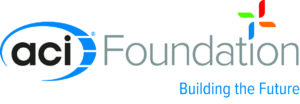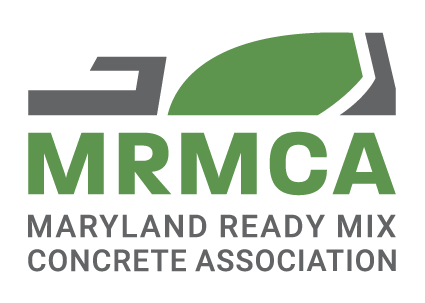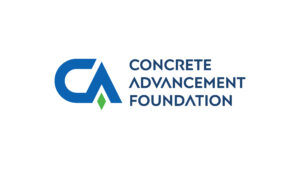By investing in new innovative technologies, ingredients and business practices, Maryland’s Ready Mix Concrete Producers are proud to provide the most sustainable concrete ever without sacrificing strength, durability, or resources for future generations. |
| SUSTAINABLE INDUSTRY RESOURCES & PRACTICES
Click Below for MRMCA'S ENVIRONMENTAL PRODUCT DECLARATION (EPD) INFORMATION ONE SHEET FOR CONCRETE PLANTS, CONCRETE CONTRACTORS, ENGINEERS & ARCHITECTS, and CUSTOMERS. Click here for MRMCA's EPD Assistance One Sheet |
 MIT CONCRETE SUSTAINABILITY HUB
MIT CONCRETE SUSTAINABILITY HUB
One of the major goals of MIT CSHub is to help realize a carbon neutral concrete industry.
Our analysis of the life cycle of concrete, from creation through demolition, has revealed that it has great implications for climate change. In fact, if the use phase of concrete is considered, concrete can lower the total greenhouse gas emissions of pavements and buildings. CSHub is creating a novel estimate of the total impact of cement and concrete, including direct and avoided emissions. Similarly, CSHub is engaged in estimating and enhancing carbon uptake in concrete.
Concrete Sustainability Hub Resources
CSHub researchers collaborate with and communicate key results to industry partners, DOTs, the construction industry, and other key decision-makers.
NATIONAL READY MIXED CONCRETE ASSOCIATION 
NRMCA's links to Responsible Sourcing, Climate Action, Green Building Market, Strength Through Transparency Material Ingredient Disclosure, EPDs, and more...
NRMCA CONCRETE SUSTAINABILITY RESOURCES PAGE
NRMCA EPD PAGE
NRMCA is an Environmental Product Declaration Verifier
An Environmental Product Declaration (EPD) is a communication document that quantifies environmental impact data from manufacturing a product. It is a summarized report extracted from an in-depth Life Cycle Assessment (LCA) that complies with the ISO 14040 series. Although environmental disclosure can be found in a variety of reports, they are most often cited as an Industry-Average EPD, or preferably, a Product-Specific EPD.
EPDs are being specified in green building standards and codes (LEED, IGCC) v4, advocacy initiatives (Architecture 2030 Challenge for Products) and even referenced in State and Local legislation. These types of market-based and regulatory initiatives are driving an increase of EPDs in many industries and product categories. Note: In LEED a “product” is defined by the distinct function it serves. That means concrete has the advantage of contributing significantly because of concrete’s wide range of applications or functions. For example, footings, foundations walls, shear walls, bearing walls, columns, beams, slabs, sidewalks, and parking areas, each with a unique mix design, would all be considered different products.
NRMCA LEEDv4GuideSpec-Concrete.pdf
ASTM is an Environmental Product Declaration Verifier
Product category rules are defined in ISO 14025 as a set of specific rules, requirements, and guidelines, for developing environmental declarations for one or more products that can fulfill equivalent functions. PCR determine what information should be gathered and how that information should be evaluated for an environmental declaration.
An Environmental Product Declaration (EPD) provides quantifiable environmental data to compare products that fulfill the same function. In order to create comparable EPDs, they must follow the rules and guidelines called for in the associated PCR.
What is an EPD Program Operator?
The EPD System Program Operator is an independent agency whose role is to conduct, administer, and supervise the development of a type III EPD. Therefore, it is responsible for the development and/or identification of existing product category rules needed for an EPD.
Reach out to recognized EPD Program Operators that comply with international standards (e.g., ISO 14025 and EN 15804). Collaborate with these operators to verify your LCA results and ensure adherence to EPD requirements.
Climate Earth
WAP
Master Builders Solutions can help your company obtain an EPD - inquire within.
MnDOT RESEARCH PROJECT: DEVELOPMENT OF PROCESS TO LOWER GWP OF CONSTRUCTION MATERIALS
MnDOT Environmental Product Declarations One-Pager
CONCRETE ADVANCEMENT FOUNDATION
- To be the resilient resource to collaboratively support concrete as the leading sustainable building material.
- To fund and manage highly credible and impactful research to achieve societal goals: Decarbonization, Resilient, sustainable and affordable communities, and world-class sustainable infrastructure.
- Disseminate knowledge and create educational tools for the benefit of stakeholders: Attract and advance the concrete industry workforce. Tools and programs to advance communities and societal goals.
- To be the resilient resource for collaboratively funding the advancement of the concrete industry: Bring together industry stakeholders to provide the financial resources and governance needed to accomplish the Foundation's goals. Measure progress and success of the Foundation goals and ensure strategic, long-term alignment and communication with stakeholder audiences
 U.S. GREEN BUILDING COUNCIL LEED
U.S. GREEN BUILDING COUNCIL LEED
As climate-related goals grow increasingly more urgent, the green building community is setting its sights on zero.
USGBC LEED
 ACI FOUNDATION
ACI FOUNDATION
ACI Foundation supports a wide range of research and educational initiatives that contribute to keeping the concrete industry at the forefront of technological advances in material composition, design, and construction. We engage with industry partners, invest in students and research, share knowledge, and provide programs to encourage innovation and new technology.
Sustainability of Concrete
The carbon footprint of concrete can be lowered by using supplementary cementitious materials (SCMs) such as fly ash, slag cement, and silica fume; by using higher-strength concrete; and through the use of alternative fuels during the cement manufacturing process. A sustainable structure is also a durable and resilient structure—long lasting and able to resist natural forces with little damage, and when damaged, easily restored for use. Use of concrete applications can also provide “green” benefits—for example, pervious concrete results in pavements, sidewalks, and parking areas that drain directly to the subsurface, eliminating the need for drainage structures, underground piping, retention basins (saving materials and lower carbon footprint), and direct discharge into rivers and lakes (an environmental benefit).
ACI - INFORMATIONAL RESOURCES ON SUSTAINABILITY OF CONCRETE
THE PORTLAND CEMENT ASSOCIATION (PCA)
-
CEMENT and CONCRETE SUSTAINABILITY: PCA Sustainability
-
ROADMAP TO CARBON NEUTRALITY: CEMENT PROGRESS PAGE
-
CEMENT.ORG Roadmap to Carbon Neutrality
-
PCA ROADMAP TO CARBON NEUTRALITY Full PDF
-
PCA Environmental Product Declaration: Portland Cement Association EPD
 Shaped BY CONCRETE (PCA)
Shaped BY CONCRETE (PCA)
Learn how cement and concrete play a key role in creating a more sustainable and resilient world from mitigating the effects of climate change to providing long-lasting, durable infrastructure, to contributing to a robust economy:
shaped BY CONCRETE Shaping Our World
After water, CONCRETE is the most consumed material on Earth.
As an Association and an industry as a whole, we are doing our part to make sure we provide our Members and Customers with the best resources to find the most sustainable building and paving products possible.
Concrete is the most widely used building material in the world because of its beauty, strength, safety, and durability. It's used in nearly every type of construction, including homes, buildings, roads, bridges, airports, and subways. And in an era of increased attention on the environmental impact of construction, concrete performs well when compared to other building materials.
As with any building product, production of concrete and its ingredients does require energy that in turn results in the generation of carbon dioxide, or CO2. However, the amount of CO2 produced during manufacturing and the net impact of using concrete as a building material is relatively small.
The following features of concrete construction are just some of the ways concrete minimizes its carbon footprint:
- Concrete is resource efficient, and the ingredients require little processing.
- Most materials for concrete are acquired and manufactured locally which minimizes transportation energy.
- Concrete building systems combine insulation with high thermal mass and low air infiltration to make homes and buildings more energy efficient.
- Concrete has a long service life for buildings and transportation infrastructure, thereby increasing the period between reconstruction, repair, and maintenance and the associated environmental impact.
- Concrete, when used as pavement or exterior cladding, helps minimize the urban heat island effect thus reducing the energy required to heat and cool our homes and buildings.
- Concrete incorporates recycled industrial byproducts such as fly ash, slag and silica fume which helps reduce embodied energy, carbon footprint and quantity of landfilled materials.
- Concrete absorbs CO2 throughout its lifetime through a process called carbonation, helping reduce its carbon footprint.



